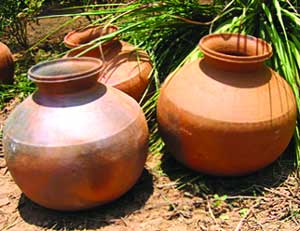The Space Shuttle's Finale
A Countdown of Countdowns: The Space Shuttle's Finale
The last shuttle, Atlantis is now ready for its valedictory flight on
Friday, 8th July 2011
For 50 years, NASA's been famous for counting backward from 10 to zero. But a final countdown is now under way that will stand out among them all. The storied space planes are retiring for good this year after one final mission this month.
The shuttle Atlantis is poised to launch NASA's final shuttle mission, called STS-135, on Friday (July 8) at 11:26 a.m. EDT (1526 GMT) from the Kennedy Space Center spaceport in Florida.
Atlantis will fly a 12-day mission to the International Space Station to deliver a year's worth of food, clothing, science equipment and supplies to the orbital outpost, a $100 billion project of 16 nations that circles 350 km above Earth. It will be the 135th and last mission for the shuttle fleet since flights began in 1981.
The space shuttle has been the human access to space since last 30 years. It has capabilities no other spacecraft can claim. No other spacecraft is likely to match those capabilities in this generation.
It is the fastest winged vehicle ever to fly, with an orbital velocity of 28,157 kmph, which is ten times the speed of a high-powered rifle bullet. It is the only winged vehicle to reach orbit, and the only reusable space launch and landing vehicle.
The shuttle can carry cargos of substantial weight and dimensions. It has taken into space more than half the mass of all payloads launched by all nations since Sputnik in 1957 – 15,64,958 kg (though STS-132) and counting as the final shuttle launch approaches.
More singular still is the shuttle’s ability to return payloads from space. It has brought back from orbit more than 97 percent of all mass returned to Earth, a total of
1,02,318 kg (though STS-132) before the upcoming final flight.
It has launched 802 crew members including those lost on Challenger and Columbia. Crew members returning on the shuttle numbered 789. Many crew members flew more than once.
A total of 356 different individuals have flown aboard the shuttle (all through STS-132).
It leaves a significant legacy.
We have learned more about ourselves, about how our bodies and those of other organisms function, from the sub-cellular level on up. We have learned how we as individuals interact with one another under unusual and stressful circumstances – and how to work together.
We have learned about our planet, its land masses, its oceans, its atmosphere and its environment as a whole. With the help of the shuttle we have learned more about our moon, solar system, our galaxy and our universe.
The Hubble Space Telescope, for example, launched and repeatedly upgraded and repaired on shuttle missions, has given us unprecedented vision of distant stars, some with planets orbiting them. It has allowed us to look at objects so distant that viewing the light from them takes us back in time to nearer the beginning of the universe.
Scientific advances continue aboard the International Space Station. The shuttle has been instrumental in the station’s construction and operation.
Perhaps as important as any element of the shuttle legacy is the development of international cooperation in space. Humans from many nations have begun to work together in space. Shuttle visits to the Russian space station Mir were a beginning that led to that new cooperation we see today aboard the International Space Station.
NASA is retiring its three space shuttles this year to make way for a new space exploration program aimed at sending astronauts to asteroids and other deep space targets. The shuttles Discovery and Endeavour have already flown their final missions.
The story linked with much of success of our space journey and also key to our further exploration to deep space in the universe.
Space technology impacts innumerable aspects of modern human life. Students from schools and colleges are encouraged to get inspire to the next generation using the excitement of space, and educate the educators about the value of space in the classroom.
For children’s imagination and understanding, Gujarat Science City (GSC) is planning to organize an awareness and understanding programme on proud Space Shuttles in its Hall of Space Pavilion.
The Hall of Space in Science City has been designed with high-tech exhibition involving latest techniques. The exhibits include simulated journey through the space, animatronics with sound-synchronized pneumatic robots, computer-controlled multi-screen panoramic projection, precision interactive exhibits on experiments planned by NASA, touch-screen computer multimedia programs. All exhibits in the hall involve massive visitor’s participation, both physical and emotional.
GSC, working under the aegis of DST, Govt of Gujarat is taking a bold new approach by informing the common public about the exciting world of science and technology. The goal is to break down communication barriers that exist between the researchers and the public so that all can understand and appreciate the importance of science and technology in our daily life.
The space shuttle has provided inspiration – for the young and the not so young. It has encouraged uncounted youths to focus on science and technology. The idea of becoming an astronaut, as some certainly will, is a powerful motivation. So too is the prospect of using such an education to advance human knowledge and understanding in space.
We take this opportunity to request one and all to visit Gujarat Science City and to be a part of this awareness and understanding about the space shuttles, its functions and to say a Good Bye to Atlantis on its success journey.
GUJARAT SCIENCE CITY
Capturing New Heights in Science Literacy!



Comments
Post a Comment